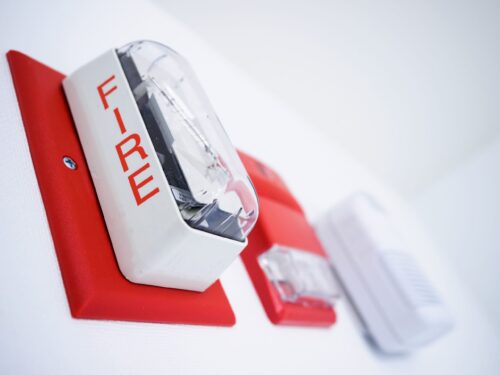
4.28.25 – SSI – Shane Clary
This column continues a series reviewing the 2025 edition of NFPA 72, the National Fire Alarm and Signaling Code.
This article is the third part of my discussion on the key changes made to the 2025 edition of NFPA 72, National Fire Alarm and Signaling Code. In this column, I will cover Chapters 17 and 18. If you missed the first two parts of my review, you can see them here and here.
NFPA 72 Chapter 17 – Initiating Devices
Within the section that covers the spacing of heat and smoke detectors, there is a new 17.5.3.1.4. This paragraph allows that, if concealed space is entirely filled with noncombustible installation in solid joist construction, the installation need only fill the space from the celling to the bottom edge of the joist of the roof or floor deck.
In past editions, there were descriptions of joists and beams. In the 2025 edition, section 17.6.3.3.3 was added for girders. The standard now states that a girder shall be considered a beam where the girder is within four inches of the ceiling. Further, a girder shall not be considered a factor for detector location when the top of the girder is more than four inches from the ceiling.
A new paragraph 17.10.1.1 was added to direct users of NFPA 72 to a new standard, NFPA 715, Standard for the Installation of Fuel Gas Detection and Warning Equipment for the installation of these systems.
Also found within the section on gas detection is a reference to a new type of detection system: acoustic leak detection.
A new section 17.11 on acoustic leak detection was then added to the standard. This type of detection works on the high-frequency sound that a high-pressure gas leak may produce. Although in the fire alarm standard, this is not a type of fire-detection device; rather, it’s for the detection of a gas leak. The designer of these systems is to consider the following five performance characteristics:
- Characteristics of the leak
- Materials being released
- Liquid or gas phase of the release
- Environment
- Ambient condition
A second new detection technology was added in a new section 17.11.3. This is thermal image fire detection. This should not be confused with video image flame detection, although the equipment used may be similar in appearance.
With video image flame detection, the detection system is using technology to determine that an image within the field of view of a camera is either a flame or smoke from a fire. This can be used in large spaces.
Thermal image fire detection is looking for the heat signature from a thermal event. This technology has been used for a number of years by the fire service in “seeing” whether there is still a fire behind a wall during fire ground operations. This technology is now moving to fire alarm systems.
Chapter 18 – Notification Appliances
A new paragraph 18.4.6.4 has been added, which makes it clear that sleeping areas shall include both bedrooms and living rooms, as well as other spaces that could be used for sleeping.
As I covered in a prior part within this NFPA 72 series, restricted audible mode operation (RAMO) notification has been added to the standard. The requirements for RAMO will be located in section 18.4.8. RAMO is intended to provide an alternative means of alarm notification in occupancies or environments in which the occupants might be sensitive to sound from an audible appliance or light from a visual appliance.
To use RAMO, either a risk analysis shall be executed or the Authority Having Jurisdiction (AHJ) or governing laws or codes would allow its use. As RAMO is very new in concept, it is not being advanced within the next edition of the International Fire Code and promulgated by the International Code Council.
The second new concept to be added to Chapter 18 for the 2025 edition of NFPA 72 is a revised look at how voltage drop calculations are to be done for direct current (DC) circuits, along with new text for alternating current (AC) circuits that are found with voice evacuation systems.
These are to be found within section 18.3.7, Notification Appliance Circuits. These calculations now require that any control or relay module that may be used are to be considered in the calculations.
The standard in paragraph 18.3.7.4 allows for the following two methods to perform the calculations:
- End-line-loaded (ELL)
- Point-to-point (PTP)
The standard in paragraph 18.3.7.5 now stipulates that all calculations are to be designed for a temperature of 167 degrees Fahrenheit.
In my next column, I will cover NFPA 72 Chapters 21, 23 and 24.
